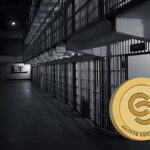Last week witnessed a significant 20% surge in Ripple‘s cryptocurrency, XRP, though it lagged behind Bitcoin and various other altcoins, particularly memecoins. Notwithstanding this, top analysts maintain a bullish outlook on XRP, forecasting an upcoming bull run for the digital asset.
Experts Predict a Notable Surge for XRP
Notable analysts like Dark Defender and Alex Cobb have cited several technical indicators that might hint at an imminent spike in XRP’s value. Dark Defender points to XRP’s stabilization at the $0.64 Fibonacci level, while Cobb and others project a potential breach of the $1 threshold, especially if it crosses a major resistance point at $0.63, paving the way to revisit its historical peak.
Additionally, other analysis from EGRAG CRYPTO aligns with these optimistic views, providing a longer-term outlook that envisions XRP potentially climbing above $10 by 2030, marking a substantial climb within the next six years.
Upcoming Ripple-SEC Case Verdict Key for XRP’s Future
A key event that could significantly influence XRP’s value is the impending conclusion of the legal tussle between Ripple and the U.S. Securities and Exchange Commission (SEC). Ripple’s series of partial wins in the previous year were met with positive market reactions, boosting XRP’s price. The lawsuit’s final hearing is set for April 23, 2024, although extensions could prolong the legal battle, potentially into 2026.
A favorable ruling for Ripple could clarify XRP’s regulatory standing, heightening investor trust and optimism, which could substantially elevate the cryptocurrency’s market position. However, an unfavorable verdict might stir regulatory confusion and curtail short-term prospects for XRP, exerting downward pressure on its price.












